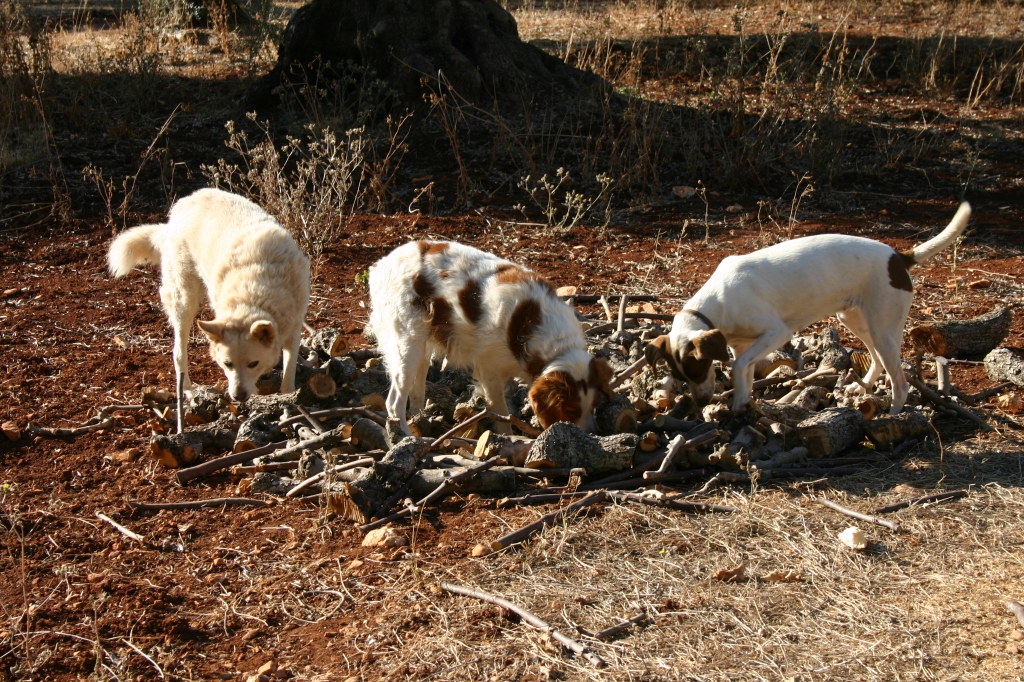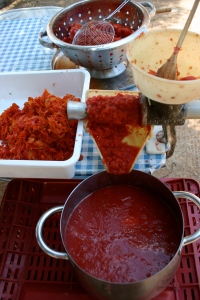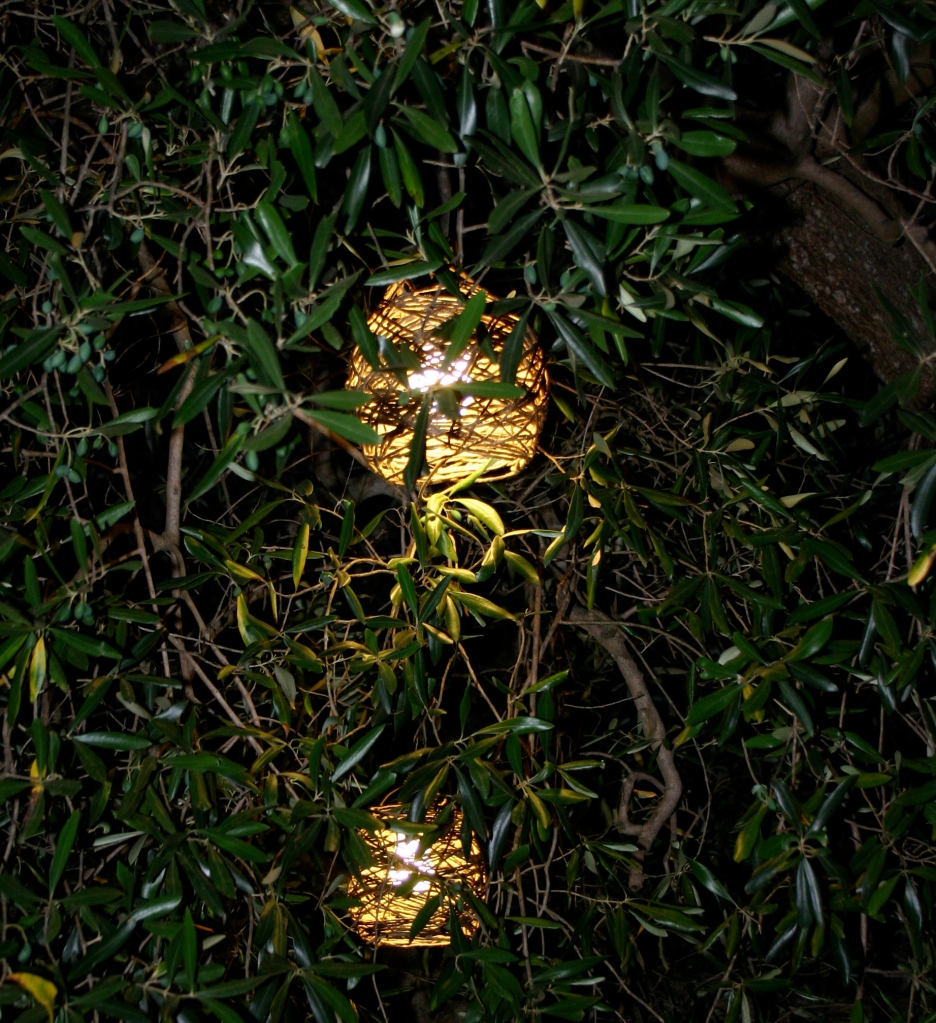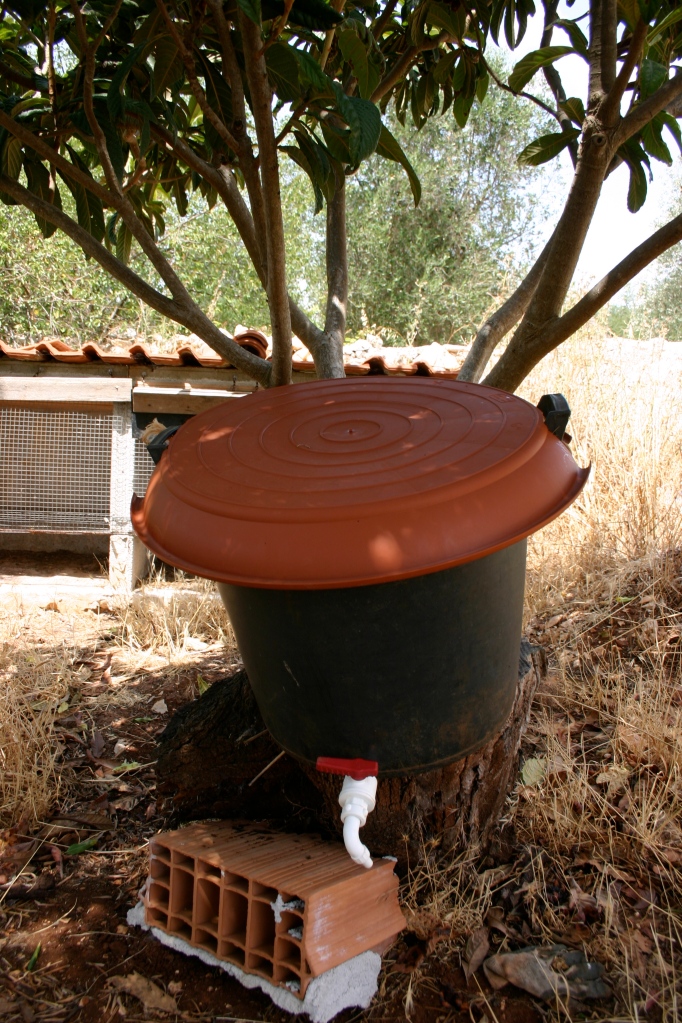Thanks to the invitation from Pat and Rick over at Living the Dream Portugal I’ve chosen Wednesday 10th, November from a couple of weeks ago as my meme day as we’re currently in the middle of the olive harvest, and our days were a little more varied back then and besides you’ll be getting an olive harvest blog next. Just to explain, in science a meme is a self-propagating unit of thought that is spread from one host to another, so a perfect way to understand what makes fellow bloggers tick.
In the summer we generally awake with sunrise, but in the winter we rely on Gaia to awake us and the other two dogs. She’s got a finely tuned body clock so I’m being woken at around 6.30-7 in the mornings. I don’t know how she does it, but she begins pestering me at exactly 5pm for her supper too.
I arose at around 6am so that I could get some freelance work out of the way before the day started proper. At around 7.30, when Gaia’s nibbling my elbow trick got too insistent to ignore I fixed the dogs their breakfast (pasta, chicken and blitzed carrot and cabbage) and some porridge for myself. I also made some dough using a starter, which was already in the fridge and returned it all to the fridge for a slow rise.
The dogs then came out to help me feed the chickens and to distract the chickens whilst I cleaned their house I dive-bombed their run with pomegranates, which is their current favourite available fruit. Cleaning the chicken house out was unexpectedly aromatic as it is flanked by our nespola and lemon trees, which are both flowering at the moment and smell divine.
With the chickens sorted I thought it was time to turn my attentions to cleaning the wood burning stove and chimney, so Jeremy went up onto the roof with a besom broom head tied in the middle of a piece of string. He fed one rope end down to me at stove level and we both pushed and pulled our end of rope until the broom dislodged any soot, which had accumulated.
With the stove cleaned and ready for action, I turned my attentions to the garden and did a spot of weeding around the brassica patch. The dogs, meanwhile, occupied themselves with sniffing stuff, whilst Jeremy completed some plastering around the new doorway he put between the living room and kitchen. We’ve had a big hole for so long now and I was really impressed to see how his plastering skills have improved so I stood admiring the doorway whilst enjoying a cup of tea.
Tea finished and some footering on the computer out of the way I took the dogs for a walk. Wednesday is a hunting day so I tend to take them out when the hunters have gone home for lunch.
For lunch I had some homemade baked beans and marmite on toast with a couple of eggs on top. I’m making big batches of beans and freezing them, as they are such a good comfort food in the winter.
I then got the sewing machine out and made some curtains for the new kitchen door along with a plastic bag holder for a neighbour who liked mine. I was hoping to make a couple of curtains to cover the storage area under the pizza oven and some draws but got distracted by the dogs wanting to play.
I had a run around with the dogs until a neighbour came to bring me some more pomegranates from his trees and some quince jam his grand-daughter made. He also asked if Jeremy would mind making him some shelves to fit a small cupboard. Italians are not big fans of DIY and are generally impressed by Jeremy’s efforts. I swear if he gets called maestro one more time his head may explode.
I then lit the stove in the kitchen and took the dough from the fridge, which I duly knocked back and shaped into a couple of loaves. Whilst waiting for the dough to rise and oven to reach temperature I roughly chopped some vegetables to make some stock. I chopped a squash a neighbour had brought round the day before, along with an onion and some chillies and popped them in the oven to roast to make soup with. I also made a chard quiche to have for lunch the following day, as we’ve a lot of wild chard growing.
For dinner we had puttanesca made with our own the freshly cured olives, home grown capers, oregano and passata. Our chillies seem to have more heat than last year’s, so I just needed to add one to provide the necessary spice. If you are not aware, puttanesca is a colloquial name for a lady of the night so the dish is either so called because it’s hot and spicy or because, said ladies of the night, would entice men in by displaying steaming bowls of the stuff.
Thanks to the new doorway the oven took the slight chill from the air. Although the woodburner is ready to go it’s not really cold enough for us to light it yet. When it gets really cold we’ll light the oven during the day and the woodburner at night. We get more than enough wood to run both along with the pizza oven and barbeque from the prunings of our olive and almond trees. It’s lucky we didn’t decide to light the woodburner as the electricity went off at around 7pm, which would have caused problems as our woodburner has a back-boiler with an electric pump.
The electricity was off all evening so we settled down to playing trivial pursuits by candlelight. Normally we’d watch DVDs and I might knit or read, but it’s always nice to get games or cards out. By around 10 we were both ready for bed and I happily snored my way through until morning.
I pass the challenge to write their own slow day account to Norm and the hard working hippy and look forward to sharing our olive tickling experiences with you in my next blog.

















